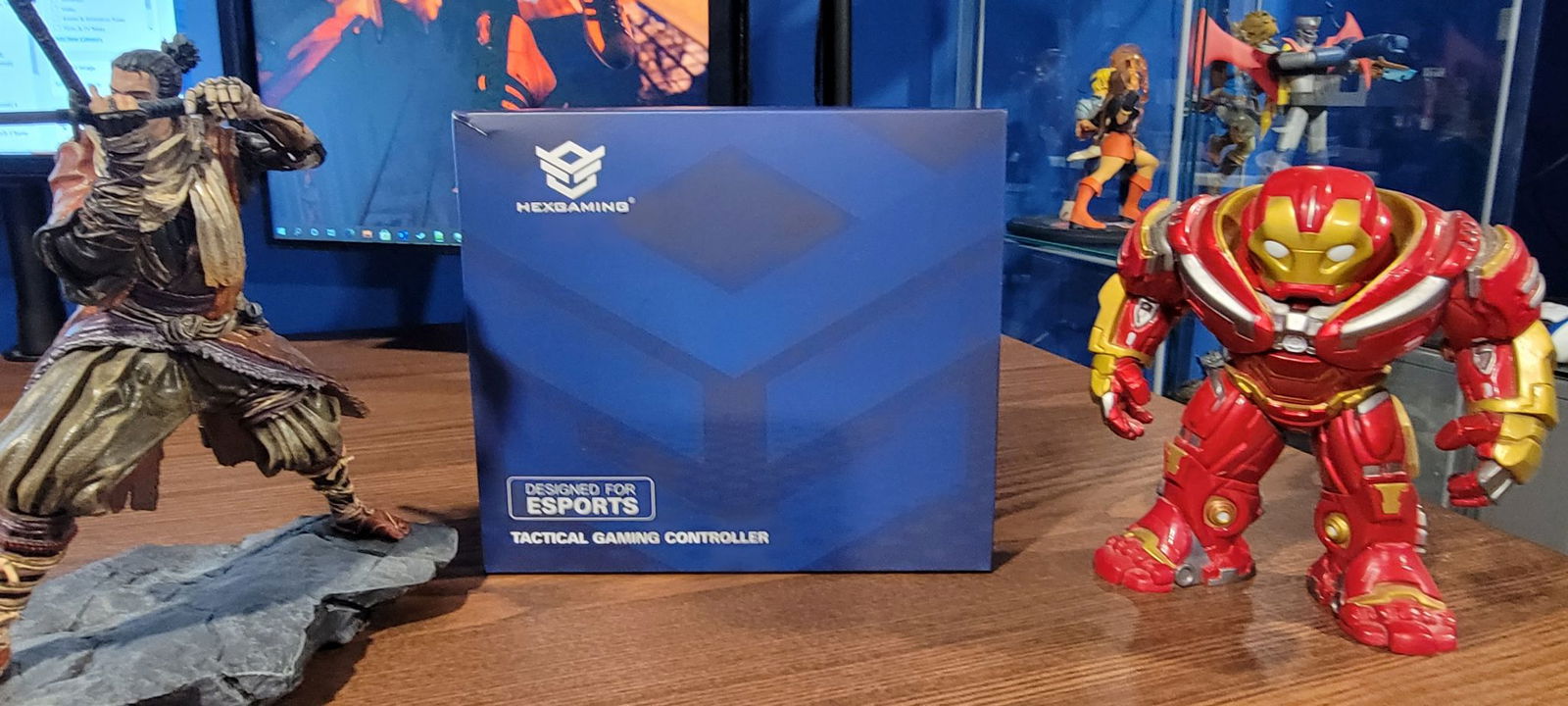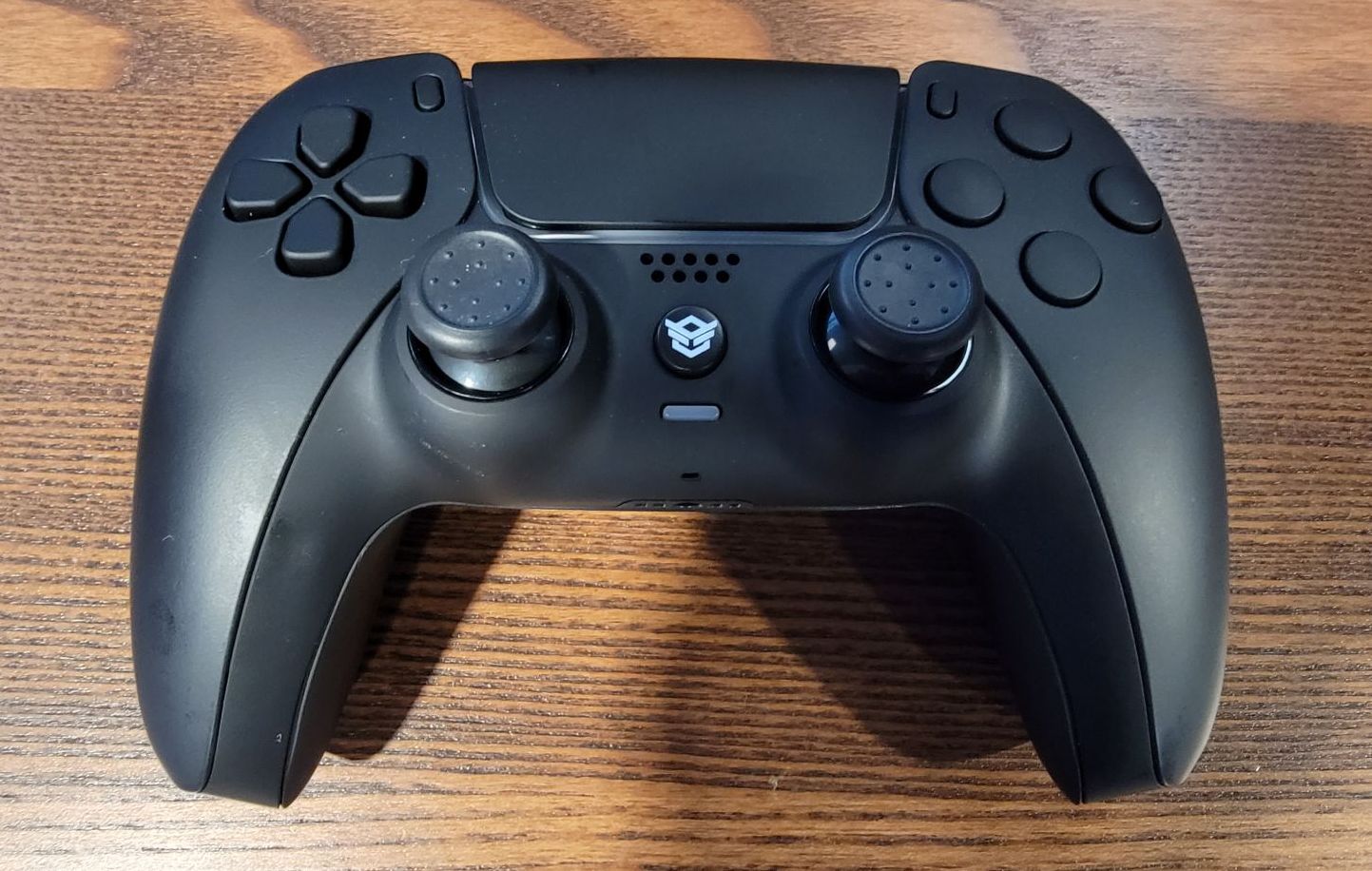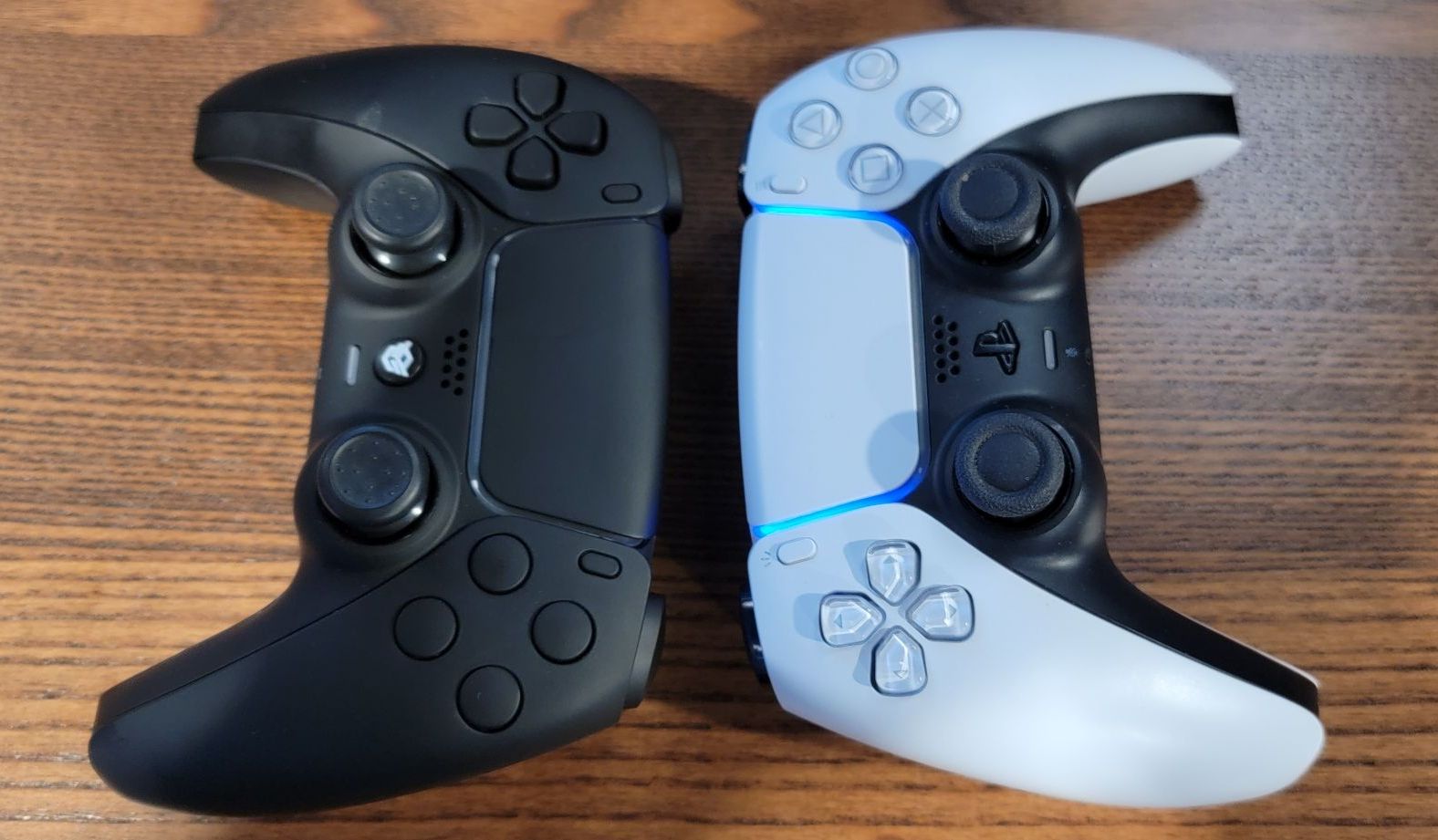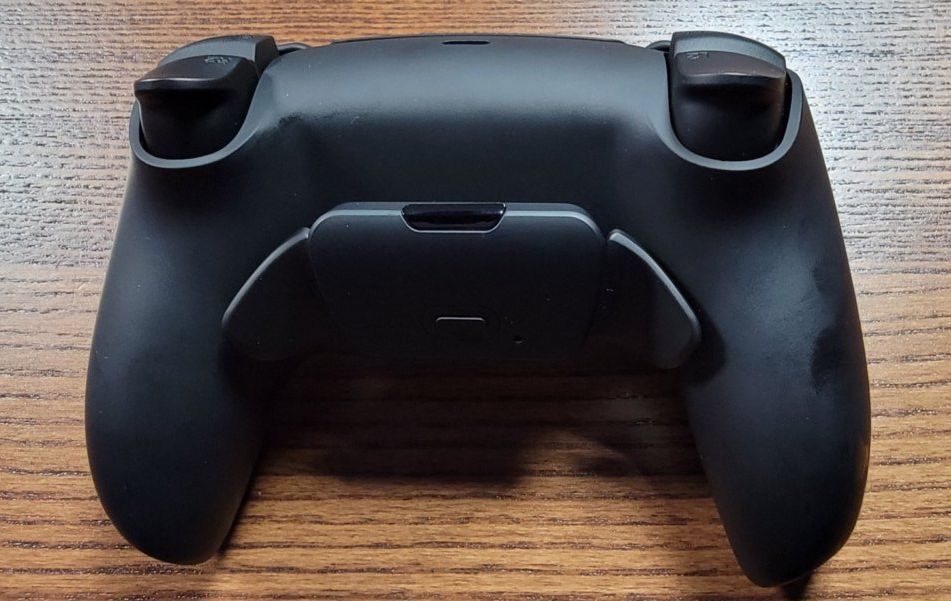A few weeks ago, I was invited to take the HexGaming Rival PS5 controller for a spin. Being a lover of both hardware and an avid controller collector, I jumped at the chance. As you may or may not be aware, the Hex Rival is the only customized controller on the market for the PlayStation 5. It’s also being marketed toward competitive games, but is it worth your hard-earned money?
Read on to find out.
What’s in the box
I like to address what’s in the box and what’s on the outside and the packaging when it comes to hardware. Speaking of the packaging, it’s actually pretty slick. The front of the box is adorned with the HexGaming logo. Other than that, it’s a normal box, yet it looks better than what we get when purchasing the official PlayStation 5 DualSense controllers. Sadly, the upper left of my box was torn, despite being inside of another box. Not sure how that happened, but it wasn’t me who did it.

Inside the box is the HexGaming Rival controller, a HexGaming branded box that contains additional thumbsticks, and a manual. There’s no enclosed USB Type C Cable, so I hope you have one already if you’re interested in this controller.
Say, that’s a nice controller
There are only two places you can pick up the HexGaming Rival PS5 controller; Amazon or directly through the HexGaming website. On Amazon, you can choose from 18 different color schemes, while on the HexGaming website, you can get 19 different favors. I didn’t select the color scheme, and I was provided with a matte black color scheme. It’s a nice-looking controller. However, the matte black shows fingerprints entirely too much. Despite my frustration with the color scheme, the controller screams quality. It weighs a little more than the DualSense controllers due to the rear buttons though I wish it had more weight.

When PlayStation released the back button add-on for the DualShock 4 controller, I was skeptical. It wasn’t until I played a few rounds in Destiny 2 that I realized its potential. Then it was rumored that the DualSense controller would have something similar, only to find out that it was all a lie. It was nice having those paddles to etch out a bit more performance, and I missed them. With the HexGaming Rival, that option has returned in the DualSense format, which I have grown to love and is perhaps my favorite controller of all time.
If you’ve only ever owned a PlayStation yet marveled over the Xbox Series 1 and 2 controllers, with jealousy of all the extended options, then you may want to give the HexGaming Rival a look. Despite looking like a standard DualSense controller, there’s a lot more here than meets the eye. The HexGaming Rival comes with several swappable analog sticks, all with different lengths. This makes them easy to swap at a moment’s notice, again like another particular controller. You pop the current thumbstick off, replace it with another one, and you’re good to go.
You’re able to program the rear two buttons/paddles with just about every button on the front of the controller, with the exception being the option and share buttons; (X, O, Triangle, Square, Up, Down, Left, Right, L1, L2, R1, R2, L3, R3, Touchpad ) Remapping the buttons is simple a well. You hold down the button that sits between the rear paddles until a red LED above it turns solid. Then you press down on the front-facing button you want to be mapped and trigger on the back of the controller until the LED blinks. Once you’ve set your mapped button, hold the rear button again until the LED turns off. It seems like a hassle, but it works faster in action, and you can do this whenever you want.
One of the best things about the Hex Rival is what HexGaming calls “Fastshots.” In a nutshell, this is a trigger stop that decreases the amount of travel needed for the trigger to react to your squeeze, making it a great device for games requiring split-second reactions. According to HexGaming, the L1 and R1 bumpers bottom out at 0.5mm, down from 1.2mm on the DualSense. They also give off a satisfying audible click. While the L2 and R2 triggers ended up with a much larger difference, at 7mm to 2mm. The travel is nearly gone.
This is a huge benefit, such as first-person shooters where you need to get your shot off before a baddie or, worse, another player does against you. It’s also viable in non-competitive games. The downside is that this does disable the DualSense adaptive triggers as the triggers don’t travel down to the controller housing. However, when I’m doing some PVP action, that’s a feature I don’t care about.
That said, do not use this controller for any game that has some adaptive trigger function. You won’t be able to take advantage of it at all.
Does it work with the PC?
I know there are quite a few PC gamers out there who enjoy using the DualSense controller. I should know as I’m one of them. I’m happy to report that the HexGaming Rival works just fine on the PC. I’ve tested the controller with DS4Windows and Steam, and it worked fine with both applications. Using this controller with Aliens: Fireteam Elite has been a blast; firing at those nasty Xenomorphs was even quicker when using single-shot weapons. I tested this with both Bluetooth and wired, and it worked fine either way.
Now, for the bad news.
Due to the design of the HexGaming Rival, with the paddles that stick out from under the controller, I wasn’t able to use charge it using any of my current DualSense charging stations. That’s not a big deal since you can plug in a USB Type C cable. Still, I wanted to disclose that.
As a competitive gamer, I like to feel that I have something in my hands while gaming. While I hate to keep mentioning Xbox’s Elite Series controller, I feel that the weight on that controller is perfect despite the quality concerns. The HexGaming Rival controller, while it does have some heft, needs to be heavier if this is supposed to be for competitive gamers. If anything gets tweaked on this controller, it needs to have some weights that could be swapped in/out to make it heavier for those who want that extra weight.
The battery life isn’t that great either, and it ranks right up there alongside the original DualSense controller. At the start, it was clocking in around 12 hours, but the more I used it, the more I found myself recharging it. This is something that’s going to become a nuisance in the future and only adds to the quagmire of forking over the cash for a controller that still is using the same 1000mAH battery as the DualSense.
The HexGaming Rival is more than enough to excite anyone who’s been looking for something more than the DualSense controller. However, there’s one nagging concern, and that’s the price tag. Coming in at the tune of $290, this controller is not cheap. Yet, it’s also the only controller available for the PlayStation 5 that provides you with rear-facing paddles. For competitive players, the means may justify the price. For others, that’s definitely something to think about.
That all said, if the price tag doesn’t scare you away, then the HexGaming Rival is an amazing piece of tech and worthwhile for anyone who’s looking for a PlayStation 5 controller that’s pretty much the equivalent of the Xbox Elite Series controller. If first-person shooters like Rainbow Six Siege, Destiny 2, or Call of Duty are your thing, and you must have the bottom paddles and trigger locks on your DualSense, then the HexGaming Rival is going to be a fantastic companion. Just don’t mind the step entry point.
Review Disclosure Statement: The HexGaming Rival PS5 Controller was provided by HexGaming for review purposes. For more information on how we review video games and other media/technology, please review our Review Guideline/Scoring Policy for more info.
Affiliate Link Disclosure: One or more of the links above contain affiliate links, which means at no additional cost to you, we may receive a commission should you click through and purchase the item.
Summary
If you’re looking for a more premium PS5 gaming experience for your competitive games, the HexGaming Hex Rival should be your first stop. That is, as long as you don’t mind the asking price.
Pros
- Finally a PS5 controller with rear paddles
- Buttons can be mapped on the fly
Cons
- Costly
- Could be a bit heavier
- The black color is a fingerprint magnet





